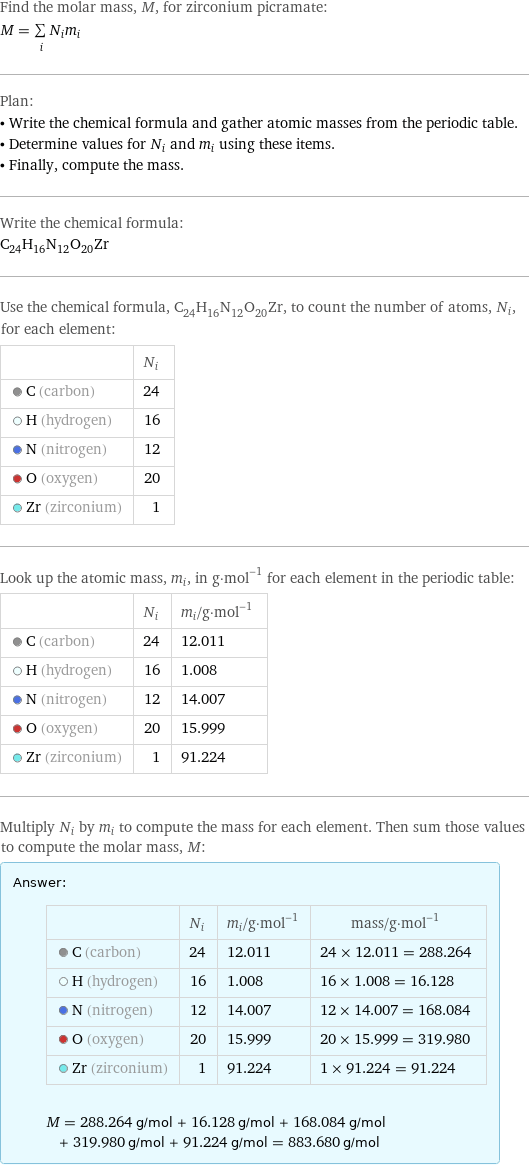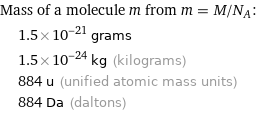Input interpretation

zirconium picramate | molar mass
Result

Find the molar mass, M, for zirconium picramate: M = sum _iN_im_i Plan: • Write the chemical formula and gather atomic masses from the periodic table. • Determine values for N_i and m_i using these items. • Finally, compute the mass. Write the chemical formula: C_24H_16N_12O_20Zr Use the chemical formula, C_24H_16N_12O_20Zr, to count the number of atoms, N_i, for each element: | N_i C (carbon) | 24 H (hydrogen) | 16 N (nitrogen) | 12 O (oxygen) | 20 Zr (zirconium) | 1 Look up the atomic mass, m_i, in g·mol^(-1) for each element in the periodic table: | N_i | m_i/g·mol^(-1) C (carbon) | 24 | 12.011 H (hydrogen) | 16 | 1.008 N (nitrogen) | 12 | 14.007 O (oxygen) | 20 | 15.999 Zr (zirconium) | 1 | 91.224 Multiply N_i by m_i to compute the mass for each element. Then sum those values to compute the molar mass, M: Answer: | | | N_i | m_i/g·mol^(-1) | mass/g·mol^(-1) C (carbon) | 24 | 12.011 | 24 × 12.011 = 288.264 H (hydrogen) | 16 | 1.008 | 16 × 1.008 = 16.128 N (nitrogen) | 12 | 14.007 | 12 × 14.007 = 168.084 O (oxygen) | 20 | 15.999 | 20 × 15.999 = 319.980 Zr (zirconium) | 1 | 91.224 | 1 × 91.224 = 91.224 M = 288.264 g/mol + 16.128 g/mol + 168.084 g/mol + 319.980 g/mol + 91.224 g/mol = 883.680 g/mol
Unit conversion

0.8837 kg/mol (kilograms per mole)
Comparisons

≈ 1.2 × molar mass of fullerene ( ≈ 721 g/mol )

≈ 4.6 × molar mass of caffeine ( ≈ 194 g/mol )

≈ 15 × molar mass of sodium chloride ( ≈ 58 g/mol )
Corresponding quantities

Mass of a molecule m from m = M/N_A: | 1.5×10^-21 grams | 1.5×10^-24 kg (kilograms) | 884 u (unified atomic mass units) | 884 Da (daltons)

Relative molecular mass M_r from M_r = M_u/M: | 884